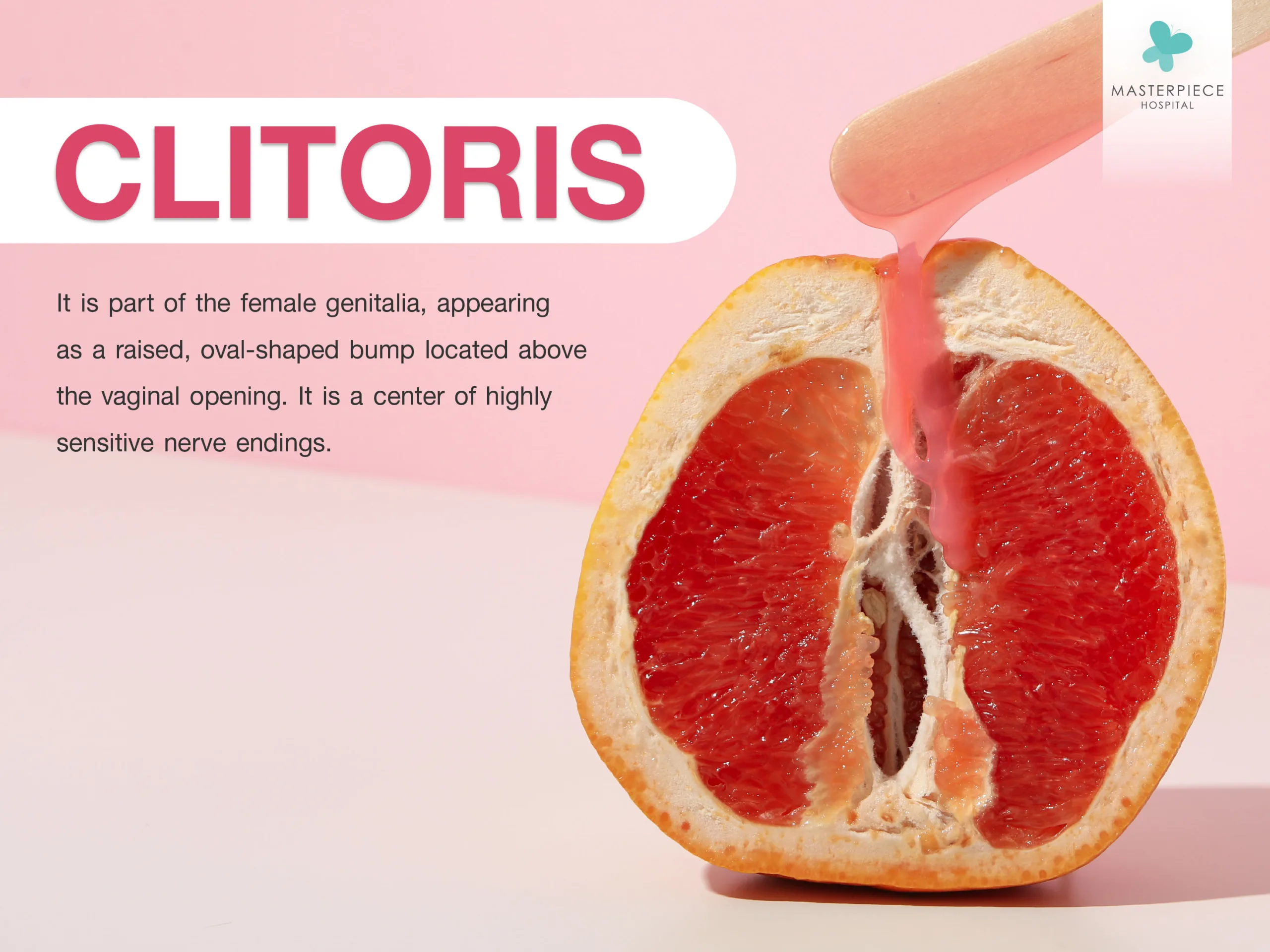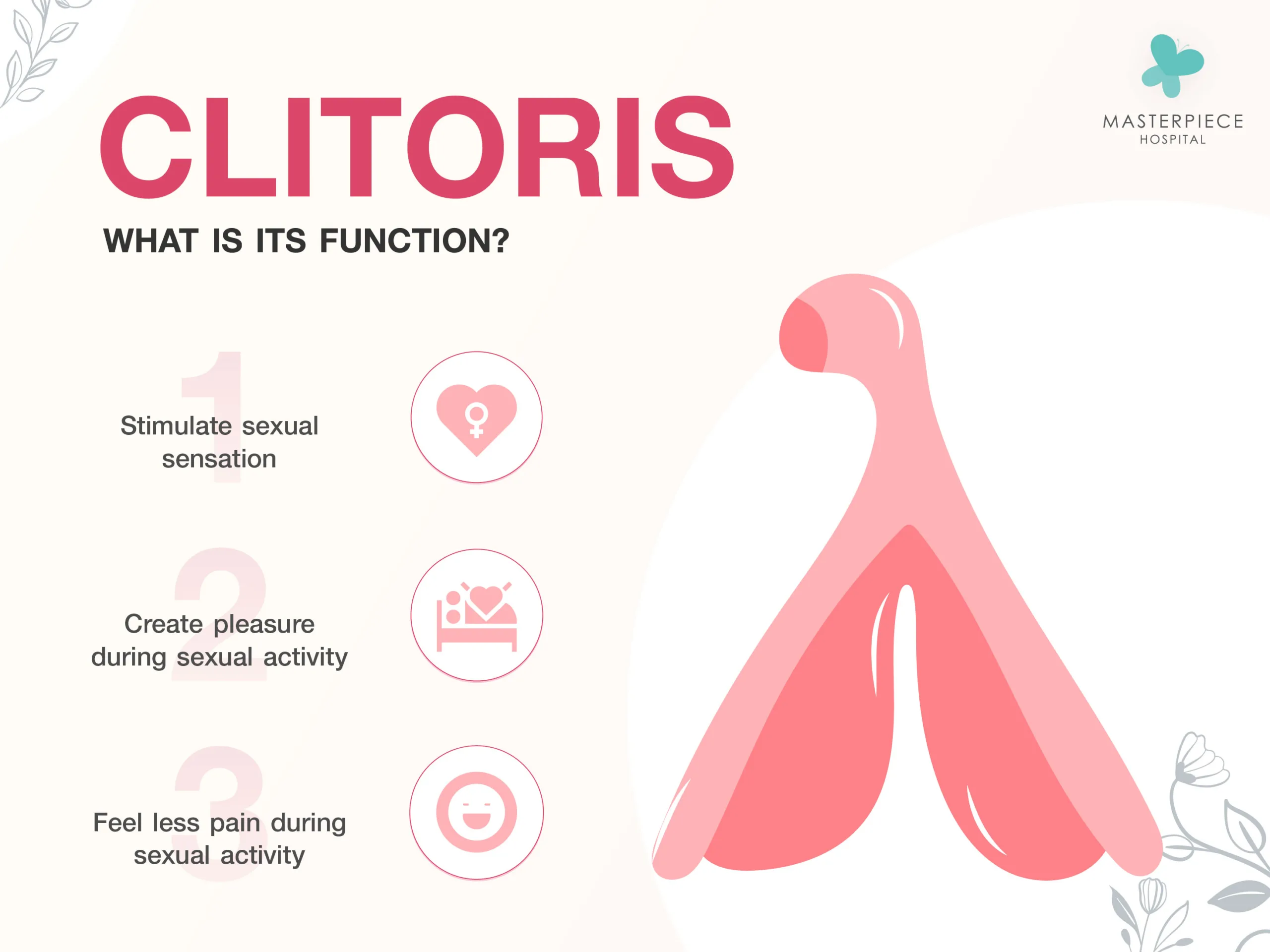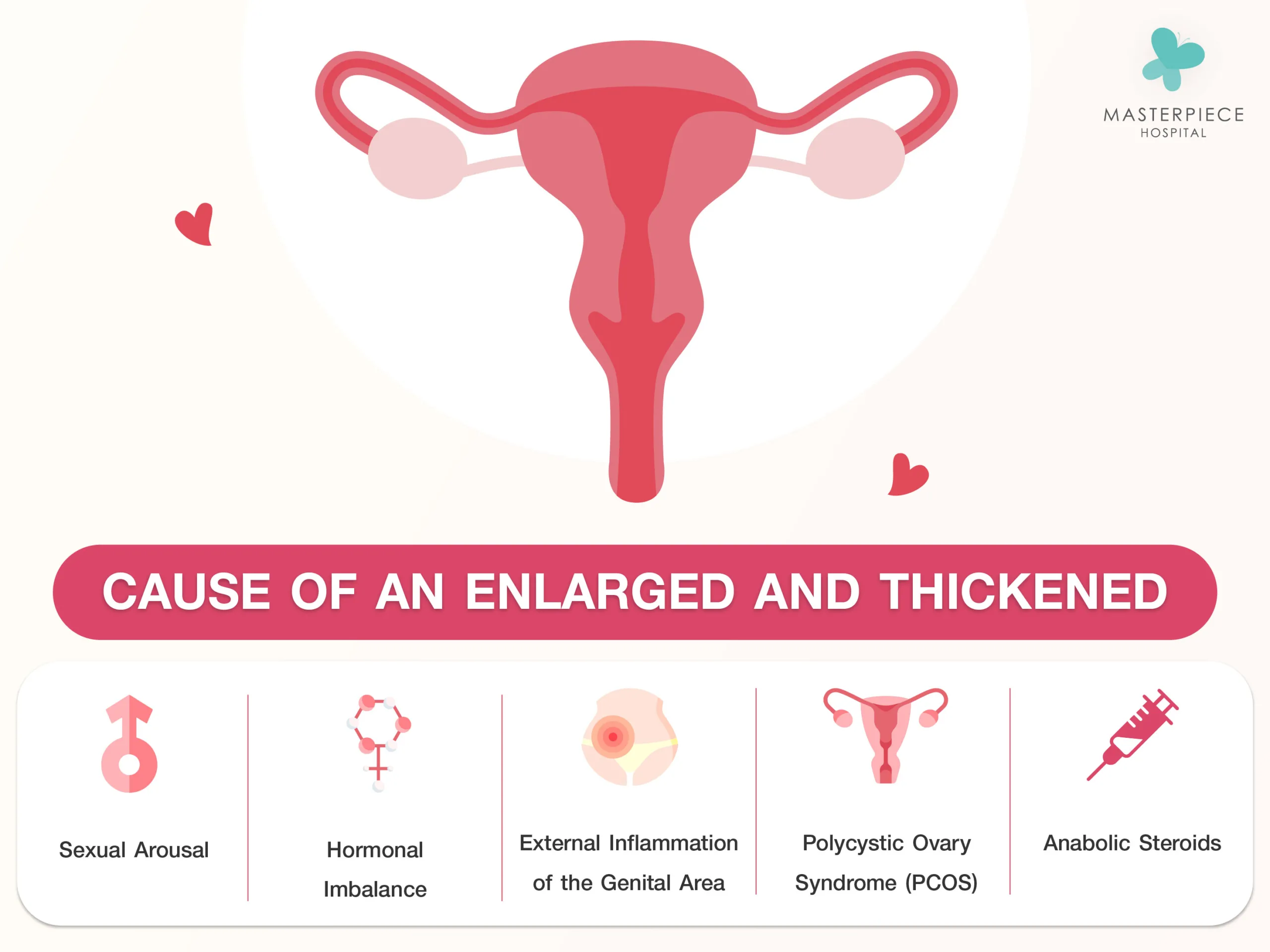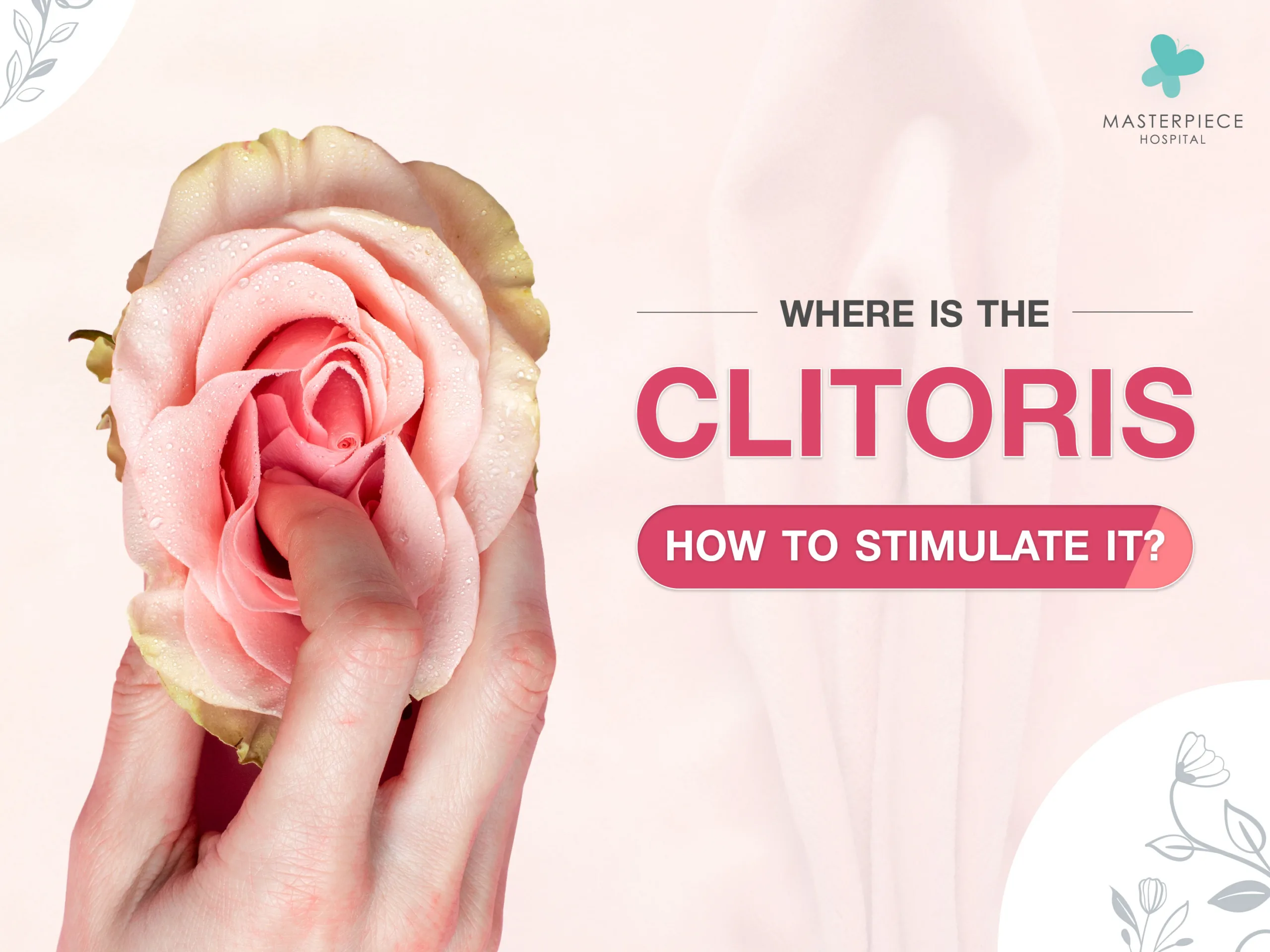Where is the clitoris? And how to stimulate it?
Many people may already know that the clitoris is an important part that helps women reach orgasm. But in the case where the clitoris is too large or too thick, it may reduce sexual sensation, and also affect daily life, such as pain during urination, itching around the clitoris, possible bleeding, and vaginal discharge. Even though it may sound scary, don’t worry — because nowadays, there is technology that can perform clitoral cosmetic surgery.
In this article, we have gathered information about the clitoris, as well as the surgical approach to reshape the clitoris, which will help women understand more about the clitoris. Let’s explore it together in this article.

What is the clitoris?
The clitoris is a part of the female genitalia. It appears as a small, raised, oval-shaped bump that looks like a pearl, located above the vaginal opening and the opening of the urethra. Although the clitoris may look small on the outside, in reality, it can have an internal structure as large as 7–9 centimeters.
The clitoris is considered a center of nerve endings that supply the vaginal area, making it extremely sensitive. When touched, it stimulates sexual sensation and creates emotional arousal, which can lead to sexual activity and orgasm. However, the surface of the clitoris is quite delicate, and if stimulated too intensely, it may cause pain.

What is the function of the clitoris?
The primary function of the clitoris is to stimulate sexual arousal. When the clitoris is touched or properly stimulated, it leads to sexual excitement, without necessarily having to spend too much time on foreplay with a partner. It also contributes to pleasure during sexual activity.
However, in cases where the clitoris is larger or thicker than usual, it may reduce sexual sensation and affect sexual satisfaction.

Causes of an enlarged and thickened clitoris
An enlarged and thickened clitoris can result from various factors, including:
- Sexual Arousal
The clitoris becomes enlarged when it is stimulated and aroused, because during stimulation, blood flows more to the genital area, causing the clitoris to become larger. It will return to its normal size after orgasm. However, in cases where orgasm is not achieved, it may take several hours up to one day for the clitoris to shrink back to its normal state. Although this is not dangerous, if the clitoris is swollen and rubs against clothing, it may cause discomfort and irritation.
- Hormonal Imbalance
In general, all humans have both male and female hormones. However, in cases where hormone levels in the body are imbalanced, resulting in excessive androgens (male hormones) in women, the clitoris may become enlarged.
- External Inflammation of the Genital Area
External inflammation of the genital area can be caused by allergic reactions to certain products, infections, or excessive friction during sex or masturbation. In cases caused by masturbation, reducing stimulation or intensity usually improves symptoms within 1–2 days. However, if the cause is an infection or sexually transmitted disease and the clitoris remains enlarged for more than a week, it is recommended to consult a doctor for a thorough examination.
- Adrenal Gland Tumor
The adrenal glands are responsible for hormone secretion. If a tumor forms and causes the adrenal glands to function abnormally, it may lead to a hormonal imbalance, resulting in an enlarged clitoris.
- Polycystic Ovary Syndrome (PCOS)
For individuals with PCOS, numerous small cysts typically develop in the ovaries. The body also produces increased levels of androgens, which can lead to an enlarged clitoris.
- Anabolic Steroids
Anabolic steroids are often used by athletes to build muscle and boost endurance. However, in women, they can raise male hormone levels in the body, and may cause the clitoris to enlarge.
- Clitoral Reduction Surgery
For those experiencing problems with a clitoris that is too thick or large, clitoral reduction surgery is an option. Nowadays, laser-assisted surgery is commonly used, allowing for greater precision. Lasers help control the depth of the incision, reduce bleeding, and minimize damage to blood vessels and tissues beneath the incision. This results in better wound healing and a shorter recovery time compared to traditional surgery.

Preparation before clitoral reduction surgery
Preparing before clitoral reduction surgery is an important part of ensuring the procedure goes smoothly. Preparation should include the following:
- The surgery should be scheduled about one week after menstruation.
- Take a shower and thoroughly clean your body, including the intimate area, before surgery.
- Stop taking medications, supplements, and herbal remedies at least one week before surgery.
- In case of heart disease, consult a doctor before undergoing the surgery.
- Refrain from eating and drinking for 6–8 hours before surgery.
- It is recommended to bring someone along, as general anesthesia will be used, and dizziness may occur after the procedure.
- If you have any drug allergies or underlying health conditions, you must inform the doctor in full. Also, if any abnormal symptoms occur, notify the doctor immediately.

Procedure for clitoral reduction surgery
Clitoral reduction surgery takes approximately 45–60 minutes. An experienced doctor will administer sedation. Once the patient is asleep, the doctor will inject a local anesthetic into the surgical area. After the anesthetic takes effect, the doctor will begin the surgery using modern techniques combined with laser technology, avoiding contact with the clitoral glans and nerves. After the surgery, the patient will rest for 1–2 hours for observation before being allowed to go home.
Postoperative care after clitoral reduction surgery
Proper self-care after clitoral reduction surgery is an important step to ensure the desired results and reduce potential risks. It is recommended to follow these care instructions:
- Take medications exactly as prescribed by your doctor.
- During the first 24 hours, you can apply cold compresses to reduce swelling. It is recommended to use a cold pack instead of ice wrapped in plastic, as moisture and vapor from plastic bags may cause inflammation and infection at the wound site.
- Avoid soaking in warm water, as it may cause bleeding.
- For the first 1–2 days, it is recommended not to bathe to prevent infection. If you experience pain at the surgical site, you should stop working and avoid all activities to reduce pain.
- After 1–2 days post-surgery, bathing is allowed. Clean the wound with soap while bathing, and after each bath, use a hairdryer to dry the surgical area for 10–15 minutes or until completely dry. Continue this practice consistently for the first 2 weeks after surgery to promote faster wound healing.
- Avoid working and performing activities such as walking, climbing stairs, or any movements that might cause trauma to the surgical wound during the first 1–2 days.
- Refrain from smoking, drinking alcohol, and consuming fermented foods for at least 2 weeks after surgery.
- During the first 2 weeks after surgery, use wet tissues to clean the vaginal opening after urination gently.
- It is recommended to rest for 3–5 days to reduce pain and minimize friction.
- Avoid sexual intercourse for at least 45–60 days after surgery.

Consultation for clitoral reduction surgery at Masterpiece Hospital
For those who have problems with an enlarged and thick clitoris, Masterpiece Hospital has the Lady Care team ready to address intimate area concerns specifically for women. Experienced doctors, together with modern techniques and hospital-standard equipment, ensure reduced risks and results that meet your expectations.
Close care is provided throughout the treatment process. If you are interested, consultations are available free of charge.
















